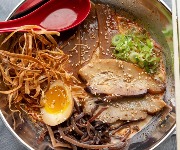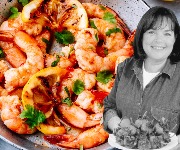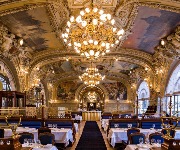How to choose the right coffee for your food

Sophie Morris explains the art of matching coffee with food.
If you are making chocolate brownies, the chances are you will take care over choosing the recipe and buy some decent chocolate, eggs and butter to get good results.
What approach will you take to the coffee you’re serving with the cakes? Have you thought about selecting a coffee that can hold its own against the rich, gooey, nutty splendour of a brownie?
I won’t judge you if the answer is no. Buying decent coffee is one thing, but actually matching it to your food is somewhat more advanced.
To be frank, I’m not sure I’m ready to bore my dinner guests with why they should drink certain coffees with certain puds, but in the name of research I attend an exclusive crash course in cake and coffee matching to discover what we might be missing out on.
Chef Ravinder Bhogal is here to guide me through. Over a dark chocolate brownie, she introduces me to her favourite coffee, Machu Picchu single origin, which is a great match for such a rich treat because it is rich, smooth and rounded itself, and stands up to the brownie.
Like matching wines to food, the key elements in choosing the right coffee boil down to common sense. You wouldn’t choose a bolshy Shiraz, for example, to serve with a delicate piece of fish.
Dark chocolate and nutty
Arthur Potts Dawson’s restaurant Acorn House has cooked up a range of desserts so that Bhogal can demonstrate how we can enhance our coffee and cake consumption by making wise pairings, and Cafedirect is on hand with its four single origin coffees.
Machu Picchu is Bhogal’s favourite, because it’s full but mellow flavour means you can drink it all day. “It’s a very balanced and velvety coffee with a rich, creamy aftertaste. It is not complex, but has all the elements you’d expect from a great coffee,” says Cafédirect’s Thierry Akroman, who heads up buying and quality.
Delicate and floral
While the Machu Picchu coffee is a great match for chocolatey and nutty puds, because they chug along nicely together, the flavours of heavier desserts with more distinct flavours, such as strong gingerbread, bread and butter pudding, mince pies and Christmas cake and pudding, require more delicate flavours to bounce off the intensity.
Step forward Cloud Forest, a Nicaraguan coffee with delicate floral notes and a zesty grapefruit twist. “The spices in gingerbread and fruit cakes matches well with the citrus in Cloud Forest,” explains Akroman. “And the zest cuts through the density of these desserts at the same time.”
Vanilla and honey
The Mayan Palenque is, once again, a quite different taste. Instead of floral, citrus or nutty flavours, the aftertaste is very smooth and sugary sweet, like vanilla and honey. The advice here is to avoid any citrusy foods, which would clash with the sweetness, and instead go for sweet, creamy desserts – the sweetness of a Bakewell tart is ideal, or try a rice pudding, panna cotta or vanilla cheesecake.
Bright and citrus
Finally comes the Kilimanjaro coffee which is grown, of course, on the slopes of the famous Tanzanian mountain. “This is a typical east African coffee,” says Akroman. “It is citrusy, zesty, high on acidity and low on body. It is a morning coffee, because it has such a kick.”
There is a lemon Eccles cakes to go with Kilimanjaro, because it needs equally zesty flavours to stand up to the acidity. Orange, lime and rhubarb sorbets, puddings and cakes would also work well.
I do like a good cup of coffee, but I’m reluctant to develop into a coffee bore. That said, taking the trouble to think about the coffee we drink: where it comes from, how it is produced and what foods it goes well with, certainly beats slurping any old beans just for the caffeine hit.
Also worth your attention:
Become the perfect home barista
Most Recent
Comments
Be the first to comment
Do you want to comment on this article? You need to be signed in for this feature








